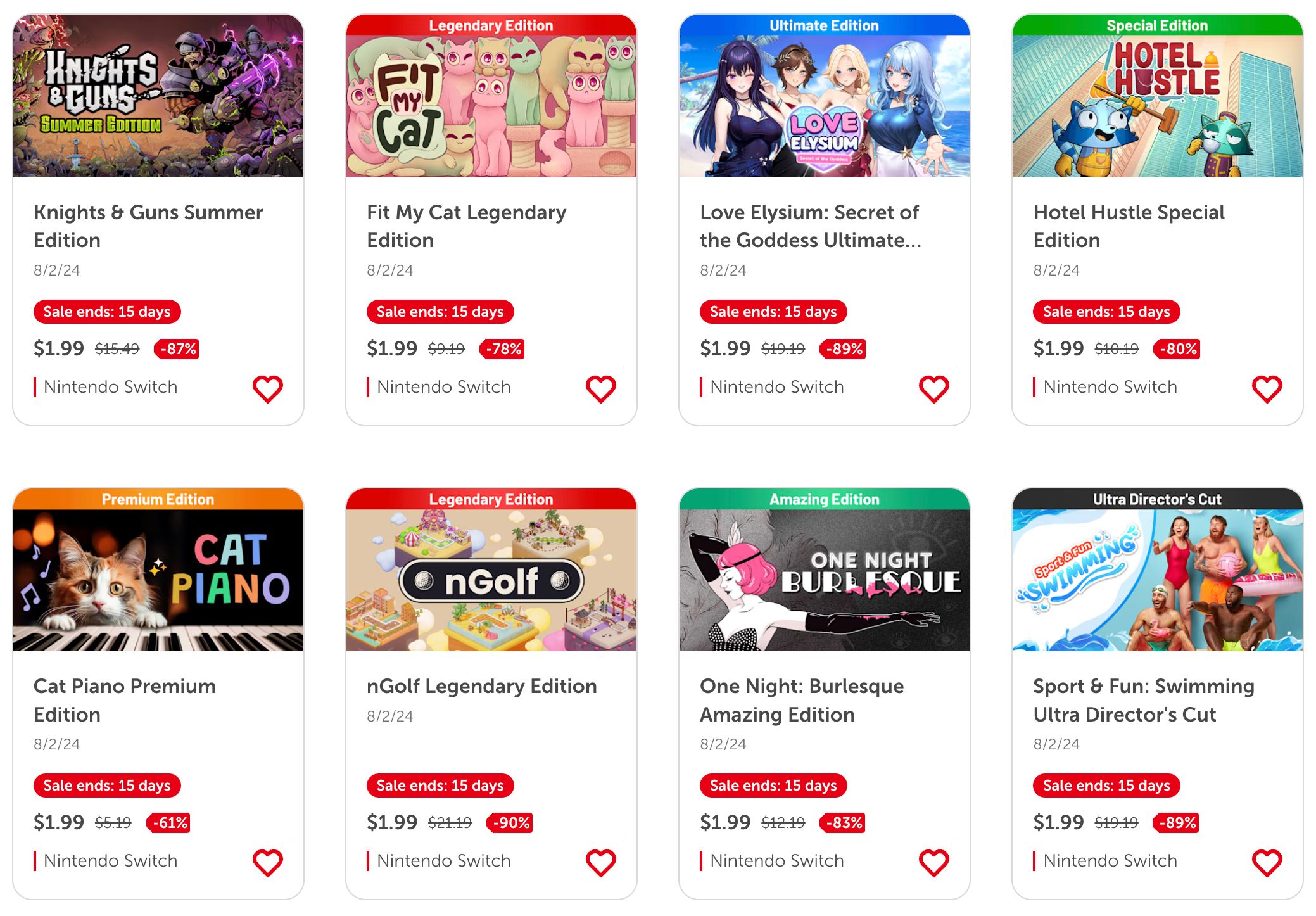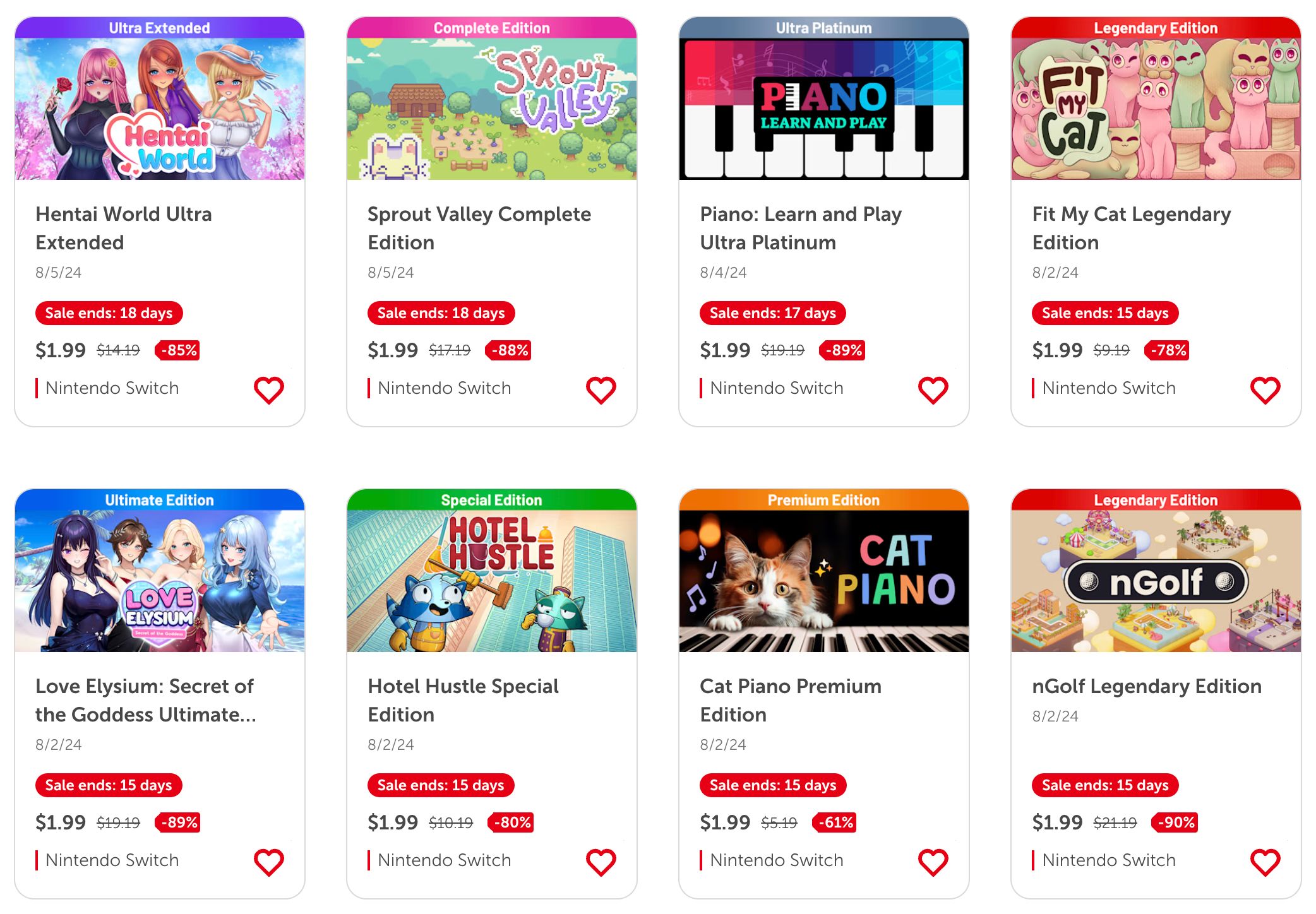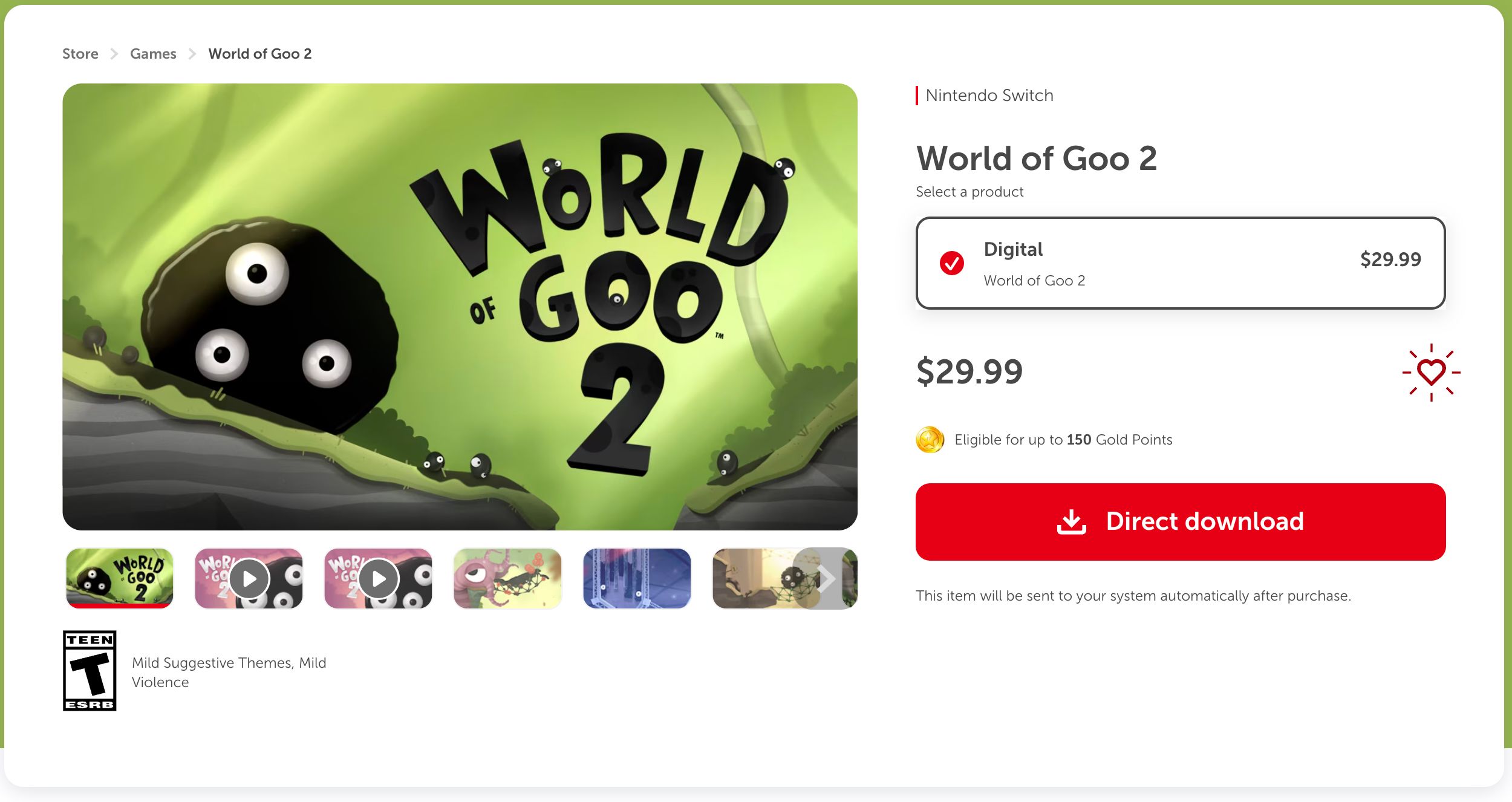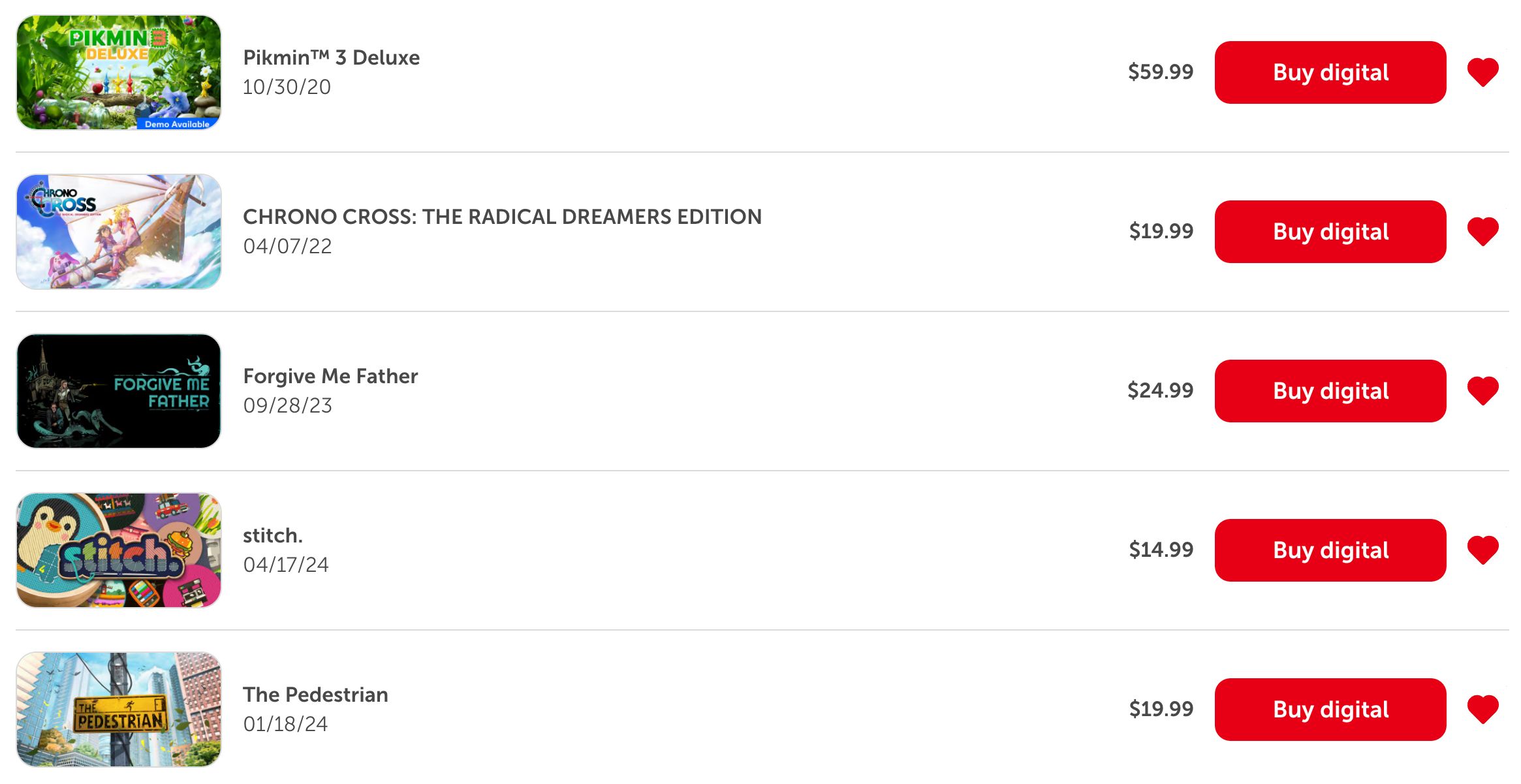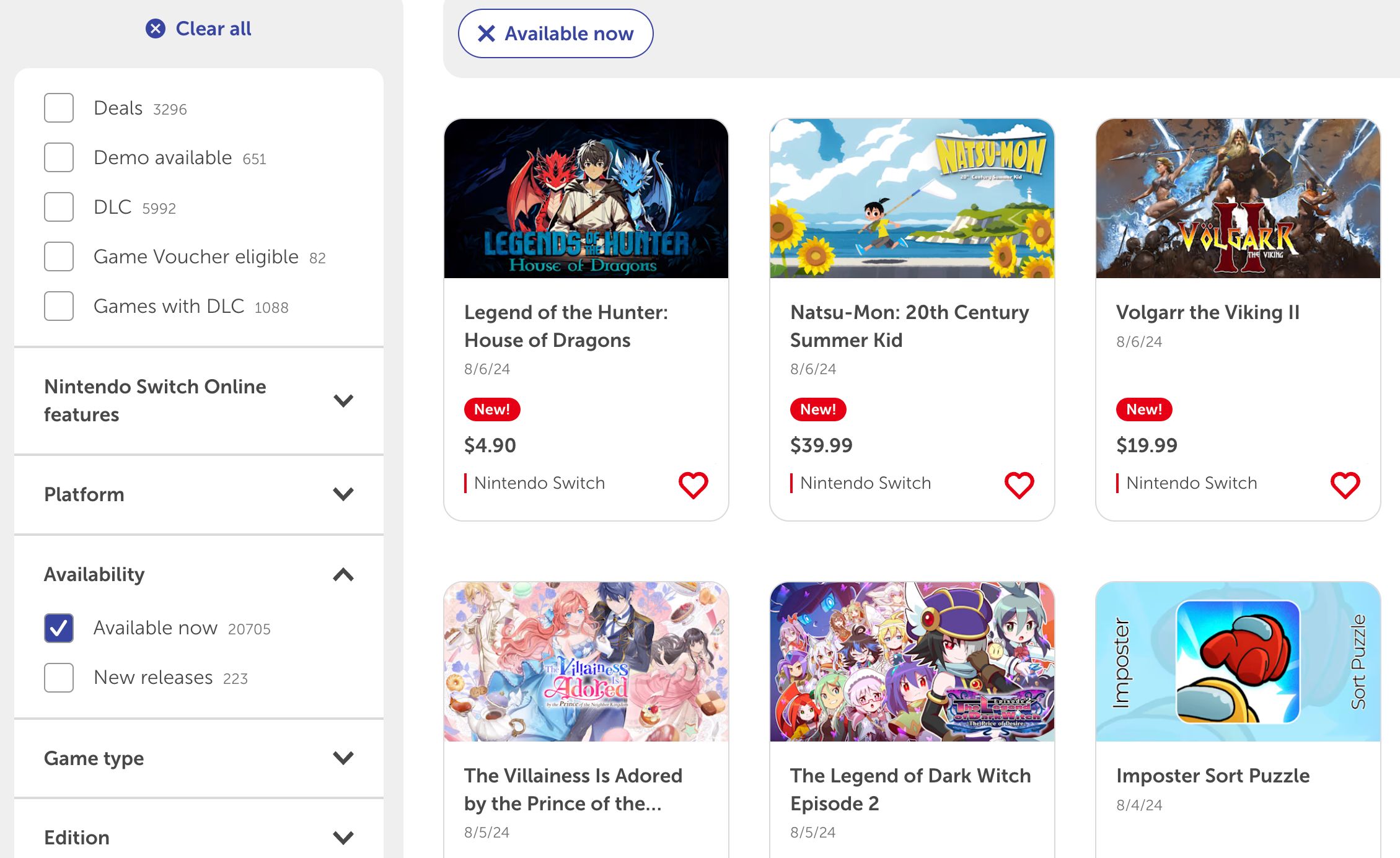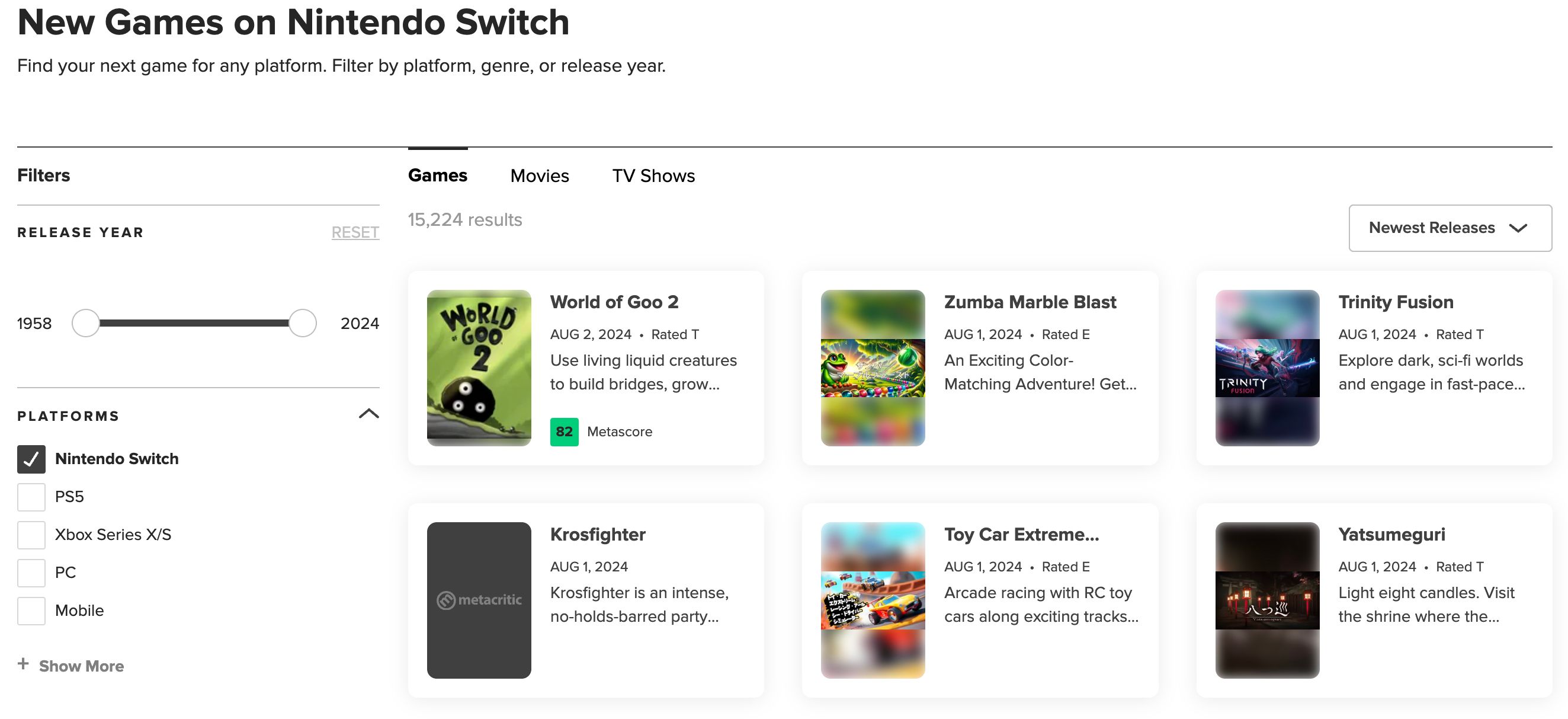Key Takeaways
- Some games on the Switch eShop are not actually new, they are just re-releases with DLC bundled in.
- Check for already purchased games, use the wishlist feature, and utilize external websites like Metacritic for accurate new releases.
- Beware of potential duplicate purchases due to “fake” new releases on the eShop by searching your library first.
Some of the newest releases on the Switch eShop are already on Nintendo’s digital storefront and some of them have been released many times over. Here’s why you should look a little closer before you download.
What’s Going On?
Discoverability on a digital storefront can be difficult at the best of times, so the likelihood that some publishers (or sometimes developers) will take any advantage they can find is inevitable. In the Switch eShop’s case, this means “fake” new releases.
A lot (not all, but definitely a lot) of games that have been appearing in the eShop New Releases category are not actually new at all. They’re “special editions” of previous releases, usually containing a handful of DLC freebies bundled in to make them appear alongside bonafide new games.
I’m not talking about a game getting a Game of the Year rendition a year or more after its initial release, or bootleg Switch games. This is about games that come out, then get “new versions” released once every month or two (possibly even every week or two). They are often released under suffixes like Deluxe Edition, Extended Edition, Special Edition, Legendary Edition, Complete Edition, Definitive Edition, and so on.
This isn’t to say that the games themselves are necessarily bad—in fact, several of them are quite good—but they’re not new releases. This can become a problem when the eShop doesn’t provide adequate warning that you already own the core game of a bundle you might accidentally try to purchase.
Just a quick pop-up warning that “Some of the selected items have already been purchased” with the option to cancel or go through with the purchase would be nice.
Make the eShop Work for You
If you think you remember seeing (or possibly even buying) a particular new release on the eShop on a previous occasion, you very well might have. Fortunately, you can use a couple of built-in tools to check on those suspicions.
Select the game you want to check and scroll down on the description page to the “Bundle Contents” section and look under “Software.” If the game’s entry shows “Purchased” instead of a price, you already own at least the base game.
Select the publisher’s name at the top of the description page (just under the title) to see all of its other releases. If your hunch is correct, you’ll see one or more other versions of the same game sprinkled throughout the library.
Or, from the main eShop page, scroll to the top of the menu on the left side of the screen and select “Search/Browse,” then type in the name of the game you believe you’ve seen before. The search function will show all the versions currently available on the eShop.
In the event that you do already own the game in question—but not all the bundle contents—open the game’s description page and scroll down to “Bundle Contents” into the “Downloadable Content” subsection. Here you can manually download any of the DLC you might have missed (which is often, but not always, free).
Thankfully, having all the DLC included in one of these bundles installed will result in the eShop flagging the bundle as “Purchased,” so you won’t run the risk of an accidental purchase in the future.
Wishlist Anything That Interests You
The eShop wishlist is another tool that can prevent you from inadvertently buying something a second time via a “new” bundle. Adding a game to your wishlist takes some of the pressure off of remembering specific names, and you can quickly double-check the publisher’s page (as detailed in the previous section) to look for potential bundles.
To add a game to your wishlist, select it on the eShop to view details. From the details page, highlight the Heart icon on the right-hand side of the screen (underneath the “Proceed to Purchase” button) and select it.
To access your wishlist, highlight your user account icon in the top-right corner of the screen (visible from almost any page on the eShop). Scroll down the left-side menu and select “Wish List,” then scroll through the list to your heart’s content.
Select any wishlisted game to view its details, make a purchase, look into associated DLC, check other publisher releases, and so on. You can also remove a game by selecting the Trash Can icon to the right of its listing.
As a bonus, keeping a running list of potential purchases inside the eShop itself also makes spotting sales on specific titles a little bit easier.
Take to the Web
Hop on your computer and check out Nintendo.com’s New Releases page to see what’s new without all the “new edition” clutter. Be aware this approach isn’t perfect. You may still see some extraneous editions, and other bundles (such as multi-game combos) might end up being hidden. Besides, the eShop’s poor Switch performance isn’t an issue when you use it on a computer.
To narrow the search to games you can buy today, scroll down and expand the “Availability” menu, then select “New releases” to see just what’s come out in the past two weeks (approximately) or “Available now” to go back much further.
Metacritic’s New Games on Nintendo Switch page also removes a lot of potential chaff from the New Releases list. You should be aware that the list order between Metacritic, Nintendo, and the eShop does differ slightly.
It’s worth repeating at this point that a game having a deluge of bundles in an attempt to game the eShop and keep a title close to the top of the New Releases category is not necessarily linked to its quality. However, the practice does open users up to the possibility of paying for a version of something they already own without immediately realizing it.
So keep a sharp eye, and definitely pay attention to any pop-ups that might appear when attempting to make a purchase.


